|
For nearly two centuries, powdered wigs—called perukes—were all the rage. The chic hairpiece would have never become popular, however, if it hadn't been for a venereal disease, a pair of self-conscious kings, and poor hair hygiene. The peruke’s story begins like many others—with syphilis. By 1580, the STD had become the worst epidemic to strike Europe since the Black Death. According to William Clowes, an “infinite multitude” of syphilis patients clogged London’s hospitals, and more filtered in each day. Without antibiotics, victims faced the full brunt of the disease: open sores, nasty rashes, blindness, dementia, and patchy hair loss. Baldness swept the land. At the time, hair loss was a one-way ticket to public embarrassment. Long hair was a trendy status symbol, and a bald dome could stain any reputation. When Samuel Pepys’s brother acquired syphilis, the diarist wrote, “If [my brother] lives, he will not be able to show his head—which will be a very great shame to me.” Hair was that big of a deal. Cover-Up And so, the syphilis outbreak sparked a surge in wigmaking. Victims hid their baldness, as well as the bloody sores that scoured their faces, with wigs made of horse, goat, or human hair. Perukes were also coated with powder—scented with lavender or orange—to hide any funky aromas. Although common, wigs were not exactly stylish. They were just a shameful necessity. That changed in 1655, when the King of France started losing his hair. Louis XIV was only 17 when his mop started thinning. Worried that baldness would hurt his reputation, Louis hired 48 wigmakers to save his image. Five years later, the King of England—Louis’s cousin, Charles II—did the same thing when his hair started to gray (both men likely had syphilis). Courtiers and other aristocrats immediately copied the two kings. They sported wigs, and the style trickled down to the upper-middle class. Europe’s newest fad was born. The cost of wigs increased, and perukes became a scheme for flaunting wealth. An everyday wig cost about 25 shillings—a week’s pay for a common Londoner. The bill for large, elaborate perukes ballooned to as high as 800 shillings. The word “bigwig” was coined to describe snobs who could afford big, poufy perukes. When Louis and Charles died, wigs stayed around. Perukes remained popular because they were so practical. At the time, head lice were everywhere, and nitpicking was painful and time-consuming. Wigs, however, curbed the problem. Lice stopped infesting people’s hair—which had to be shaved for the peruke to fit—and camped out on wigs instead. Delousing a wig was much easier than delousing a head of hair: you’d send the dirty headpiece to a wigmaker, who would boil the wig and remove the nits. Wig Out By the late 18th century, the trend was dying out. French citizens ousted the peruke during the Revolution, and Brits stopped wearing wigs after William Pitt levied a tax on hair powder in 1795. Short, natural hair became the new craze, and it would stay that way for another two centuries or so. from MentalFloss For a deeper dive into hair powder and "big wigs" check out this article: Hairdressers curling one person and using hair powder on another.
By Charles Catton in 1780s. Public domain.
0 Comments
This section is for the "Follically Challenged". There are so many conversations and articles on the topic and I want make sure you are getting good information. This month's article Birth control pills can cause hair loss due to their effect on a person’s hormones. Many prescription and nonprescription treatments are available for hair loss, or a person can switch to a nonhormonal form of birth control. Any hormonal form of birth control — including oral pills, skin patches, hormone injections, and implants — can potentially cause hair loss. The ingredient in these products that may cause hair loss is progestinTrusted Source. Progestin is a hormone that has androgenic activity, which means that it acts similarly to male hormones. This article discusses birth control pills, their side effects, and how they may cause hair loss. It also examines the risk factors and treatments for hair loss. How birth control pills work Birth control pills reduce the likelihood of pregnancy in a couple of waysTrusted Source. Firstly, they prevent the ovaries from releasing eggs. Secondly, they thicken cervical mucus, which helps keep sperm from reaching the egg. Other forms of hormonal birth control, including skin patches, minipills, progestin shots, and vaginal rings, all work in the same way. Types of birth control pills There are two types of birth control pills: combined and progestin-only. Doctors prescribe them, and a person takes one daily at the same time each day. Depending on the type of pill, some people might have a 7-day break from taking it each month. Combined pill A combined birth control pill, which some people simply call “the pill,” is a combination of progestin and estrogen. Progestin is a synthetic form of progesterone, a hormone that the ovaries release naturally. The estrogen in the pills is also synthetic. Due to the possible side effects, doctors may not prescribe these pills for:
Progestin-only pill The progestin-only pill is sometimes called the minipill. It contains only progestin and is an option for people who cannot take estrogen. Side effects Both types of birth control pills can cause side effects, which can vary among individuals. Combined pill Side effects may include:
The combined pill also carries some health risks, which include: Progestin-only pill Bleeding changes are the most common side effect of progestin-only pills. The changes may be unpredictable and involve short cycles of spotting. Less often, people taking the progestin-only pill may experience heavy bleeding or no bleeding at all. Other side effects may include:
Progestin-only pills do not have the risks that are associated with combined pills. How the pill causes hair loss Progestin is the component of birth control pills that causes hair loss. Unlike natural progesterone, this synthetic form of the hormone has androgenic activity, so it may produce effects similar to those of male hormones. The androgenic activity of birth control pills may cause various negative effects, including hair loss. Some progestins have a greater androgenic effect than others. Birth control pills are more likely to cause hair loss in females who are hypersensitive to hormonal changes or have a predisposition to hormonal-related hair loss. Those with a family history of hair loss should also be aware of this possible side effect. Anyone with concerns about hair loss can speak with a doctor about taking a pill that has low androgenic activity. Alternatively, they can ask about nonhormonal forms of birth control. From Medical News Today
7/25/2021 0 Comments What Does Blue Shampoo Do?When you color your hair brown or blonde, you might not like the warmth that comes through your hair color. Going for a cool-toned look, it’s important to have an at-home care routine that will help you neutralize brassy tones and keep your color free of unwanted orange shades. If this sounds like something you struggle with, find out more about what a blue shampoo is and how to use it properly to avoid having a green hair mishap. 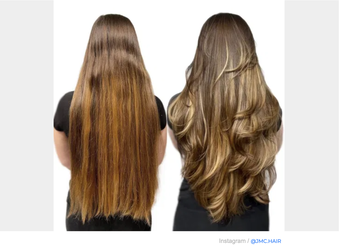 What Does Blue Shampoo Do? Blue shampoo is a toning shampoo that contains blue pigments. The latter deposit onto the hair with each wash, neutralizing any warm underlying pigments. If you have red or orange tones in your hair, blue toner will not give you a blue tint: because blue and orange are opposites on the color wheel, blue pigments will do corrective coloring, neutralizing orange and keeping your hair color cool. 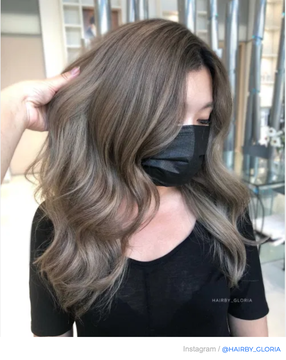 Who Should Use Blue Shampoo? Blue shampoo should be used on lightened and highlighted brown hair and is ideal for anyone trying to maintain a perfect caramel, dirty blonde, and ash brown color. It can also be used on natural brunettes but the effect might not be as drastic. Here is a color science behind it. Each hair color has a variety of underlying warm pigments that always come through when the hair is being lightened to a new hair level. Medium to light shades of brown hair naturally contain warm undertones such as red and orange, and they almost always come through when going through a color process. In this case, you will most likely benefit from a blue shampoo that will help you reach or maintain the desired brunette hair color. 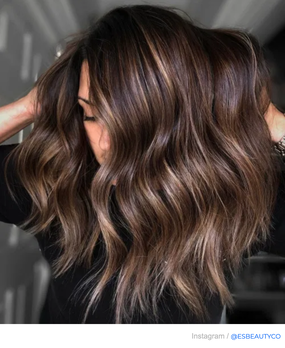 For highlighted and blonde hair, the results of using a blue pigment may be different and, potentially, less appealing. It is not recommended for golden or yellow-based blondes because blue shampoo can add a green tint to the hair. Remember, when yellow and blue mix, it creates a green color – a hair color mistake that is very difficult to correct. Thus, when your hair is highlighted to yellow, you should be very careful with blue toners and blue shampoos. If your hair is highlighted to a pale yellow or almost white blonde, a blue shampoo can give it a slight blue tint. Thus, when you seek an icy blonde color, it is key to use a silver blue toner instead of a blue one. It will neutralize the underlying red and orange pigments in your hair and enhance the icy tones.  Blue Shampoo vs Purple Shampoo Purple shampoo and blue shampoo work in a similar way, canceling brassy tones in your hair color. Because purple and yellow are opposites on the color wheel, violet pigments cancel out brassy yellow tones, which makes it great for making blonde hair more neutral. However, the purple shampoo will not work as well for caramel highlights or ash brown hair, as brassy orange is best neutralized by blue pigments. 5 Best Blue Shampoos to Choose If blue shampoo sounds like something you would benefit from using, look into purchasing one of our favorite ones:
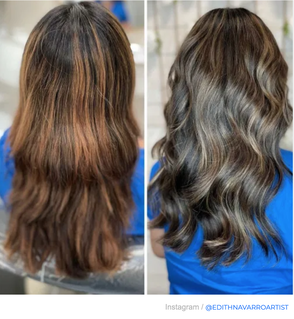 How to Use a Blue Shampoo? Whatever your desired look is, most toners are demi-permanent colors. Thus, a color stays looking its freshest for up to 3 weeks, and you can expect to see warm tones coming back through towards this time. Of course, that depends on how often you shampoo your hair, how much you are exposed to the sun, and the quality of your water. If you want to avoid the warm tones, invest in a blue shampoo to use in between hair appointments at home. You likely won’t need to start using a blue shampoo until week 3; however, feel free to add it to your hair care routine whenever you notice a lot of unwanted brassy tones coming through your strands. Once you feel it is time to start incorporating it into your hair care routine on a regular basis, use it up to two times a week, which is generally enough to see the tonal change in your hair. First things first, there’s something we need to make very clear. As you’ve probably seen with many a male celebrity, there is a world of difference between simply deciding not to cut your hair one day, and growing your hair out with actual effort. And yes, you can tell the difference between the two. There are a few things you can do to make sure you don’t fall into the former category though, starting with…  Get As Many Opinions As Possible Before you decide to go full-Fabio, do a serious evaluation as to whether the product of your spent time and effort is actually gonna look good or not. Take a look in the mirror, use a snapchat filter, ask your family, ask your Mrs, ask your mates, ask anyone how they reckon you’d look with long hair. Also, don’t be afraid to cut it back if you don’t think it’s going to go as well as you thought. There’s no shame in trying, but we can’t all be Chris Hemsworth.  Match Your Style To Your Features There’s a few things that can determine just how good your mane is likely to look, and they all rest on your face. Having thicker hair in certain places (for instance a heavier top and thinner sides, or vice versa), can help accentuate or balance the features of your mug, meaning it’s important to get everything proportioned correctly. If you have large features (big nose, big lips etc.) or a rounder face, go for bigger, larger, more textured styles to soften them. Early Mick Jagger is a good example. If you have smaller features and a thinner face, a thinner, longer style is probably more suitable. Think Zlatan or Jared Leto.  Adjust Your Style As It Grows Of course, before you reach a glorious mane you’re going to go through months of awkward lengths, styles and unruliness that’ll make you question whether or not you want to continue. The answer to this issue is twofold. One, make sure you’re giving your hair the best chance to grow healthily by eating a decent diet and using conditioning products as it grows. Two. Don’t be afraid to get a little product involved to keep things looking presentable. It’ll take time for your hair to reach a long enough length to weigh itself down and look properly natural, so you may have to compromise for a while. Once It’s Grown, Let Your Barber Take the Reigns If you’ve grown your hair out right, it should need as little maintenance as possible to make it look good. If you want to blow dry it, go for it, but lay off on the styling products, unless of course you’re trying out for a Motley Crue tribute act. The hallmark of a grown-out hairstyle that works is that it should look good sitting naturally. If it doesn’t, then let your barber fix it or consider a change of style altogether. That being said, take care of your hair. Short hair might let you get away with being a little more relaxed on the shampoo and conditioner, but as any girl will tell you, long hair won’t afford you that luxury.  Always Keep It In Check Keeping your hair healthy often boils down to making sure you’re touching it as little as possible, but depending on how long you decide to go, you’re gonna have to figure out ways to make sure it’s not going everywhere when you’re playing sport, doing manual labour or even just walking in a windy day. The key here is to experiment with what suits you. Take as much inspiration as you’d like when it comes to buns, ponytails, headbands, bandannas or whatever, as long as you’re avoiding the top knot. Need More Motivation… Growing hair out, men? Check out these 55 medium length hairstyle ideas for men. From DMARGE
With the warm and welcoming weather, hot holiday season and outdoor restaurant terraces, the summer season is exactly the best time to rock a new hairstyle. Are you looking for some hair inspiration and willing to explore the most recent hair trends? We’ve got you! From the latest haircuts and hairstyles to some hairstyling tips, we have collated everything you need to make your hair look great this season. Scroll down to see some of the best and seriously sought-after 2021 hair trends.  #1: Mullet Haircut Are you bold enough to pull off this latest hair trend? Popular in the 80’, mullets are experiencing their resurgence as the number one female haircut for 2021. With tons of texture and movement, shorter sides and longer back, this look is a quintessence of rebellion. Even though this haircut is not for everyone, it is undeniably cool and sexy.  #2: Angled Collarbone Bob Are you debating on going short for a while but lacking confidence for the leap? An angled collarbone bob, one of the looks trending now, is a great option for a “short but not too short hairstyle”. We love its incomparable versatility: you can wear the collarbone bob straight and sleek for work, wavy and undone for a night out or curly and flirty for a dinner date. At the same time, on a hot day, you still have that safe backup option to throw your hair up.  #3: Half Up Half Down with a Scrunchie Everyone seems to be mad about scrunchies this summer – they are so 90s’ and so cool. Velvet or silk, neutral or with a print, matching or contrasting with your hair color – options for a trendy scrunchie hairstyle are numerous. Put all your hair up in a top knot or, even better, wear it in a half up half down hairstyle to show off the depth of your balayage or any other sassy color for summer.  #4: Shag Haircut How divine is this wispy, feathery hairstyle – so effortless and daring, yet feminine and soft. Heavily layered, with plenty of texture and face-framing strands, shag cut is one of the major 2021 fashion trends. The good news is that it is relatively low maintenance, so you won’t spend hours to style it. In fact, those choppy layers look good even when they dry out naturally which is a rare bonus for a top-notch haircut.  #5: Middle Part Every detail counts when it comes to refining your style, and the way you part your hair is one of those little things that can change the whole picture. While side-swept hair with an ear tuck was huge during the last decade, this parting is now considered “too millennial”. Even though we believe that the most fashionable hairstyle is the one that suits you, we need to admit, the middle part is currently a big thing. Why not simply try it?  #6: French Braids What can be better than keeping your hair away from your face and neck on a hot day? French braids are going strong this summer season and are a great hairstyle for a day on the beach, festival, or picnic. Before you start braiding, use some gel or hair cream and rub the product between your fingers to tame the flyaways and frizz – this way your braids will be neater and more long-lasting. It won’t hurt to use just a tad of hairspray to finish the look.  #7: Summer-Ready Curls Curls and waves are popular every summer: it’s utterly the best way to style your locks for a dinner date in a park, girls’ night on an open terrace, or just a good hair day. Often, in other seasons, poor weather conditions can put you off from making an effort to style your hair, as you clearly know – curls are not going to survive wind, rain or snow. On the other hand, warm summer days are virtually made for adding waves to your hair. Just make sure you use the heat protecting spray before curling.  #8: Short, Blunt Bob Bob haircut is a staple for many years since Vidal Sassoon made it popular in the 1960’, but a short and blunt version of this cut is one of the main hairstyles for 2021. Use some mousse to add body to your hair and blast dry it for a slightly undone, effortless look. While smooth and polished bobs will always be popular, stylists say that a modern bob needs to be slightly tousled and imperfect.  #9: Curtain Bangs Everyone knows that eternal bangs cutting and growing dilemma – we certainly all have been there. However, so popular curtain fringe is a completely different story. Elongated and subtle, it frames your face in the most flattering way, while giving you the freedom to pin it back. As the curtain bangs blend with the rest of your hair, growing them out won’t be a big deal. Do you even think you’d want to, though?  #10: Female Crop Cut Mimicking an outgrown pixie, crop cut is a blunter and bolder version of a women’s short haircut. If you feel ready for an ultimate statement hair crop, this 2021 summer hair trend is exactly what you need. Ask your stylist for a slightly heavier and longer line at the nape and around the temple area and go full-on texture at the crown to hit all this summer’s trends. A cropped cut is one easy to style, but you will have to get used to the regular use of a hairdryer – unfortunately, most of the short haircuts end up looking flat without styling. Use some paste or pomade to finish the look. |
Hair by BrianMy name is Brian and I help people confidently take on the world. CategoriesAll Advice Announcement Awards Balayage Barbering Beach Waves Beauty News Book Now Brazilian Treatment Clients Cool Facts COVID 19 Health COVID 19 Update Curlies EGift Card Films Follically Challenged Gossip Grooming Hair Care Haircolor Haircut Hair Facts Hair History Hair Loss Hair Styling Hair Tips Hair Tools Health Health And Safety Healthy Hair Highlights Holidays Humor Mens Hair Men's Long Hair Newsletter Ombre Policies Procedures Press Release Previous Blog Privacy Policy Product Knowledge Product Reviews Promotions Read Your Labels Recommendations Reviews Scalp Health Science Services Smoothing Treatments Social Media Summer Hair Tips Textured Hair Thinning Hair Travel Tips Trending Wellness Womens Hair Archives
April 2025
|
|
Hey...
Your Mom Called! Book today! |
Sunday: 11am-5pm
Monday: 11am-6pm Tuesday: 10am - 6pm Wednesday: 10am - 6pm Thursday: By Appointment Friday: By Appointment Saturday: By Appointment |

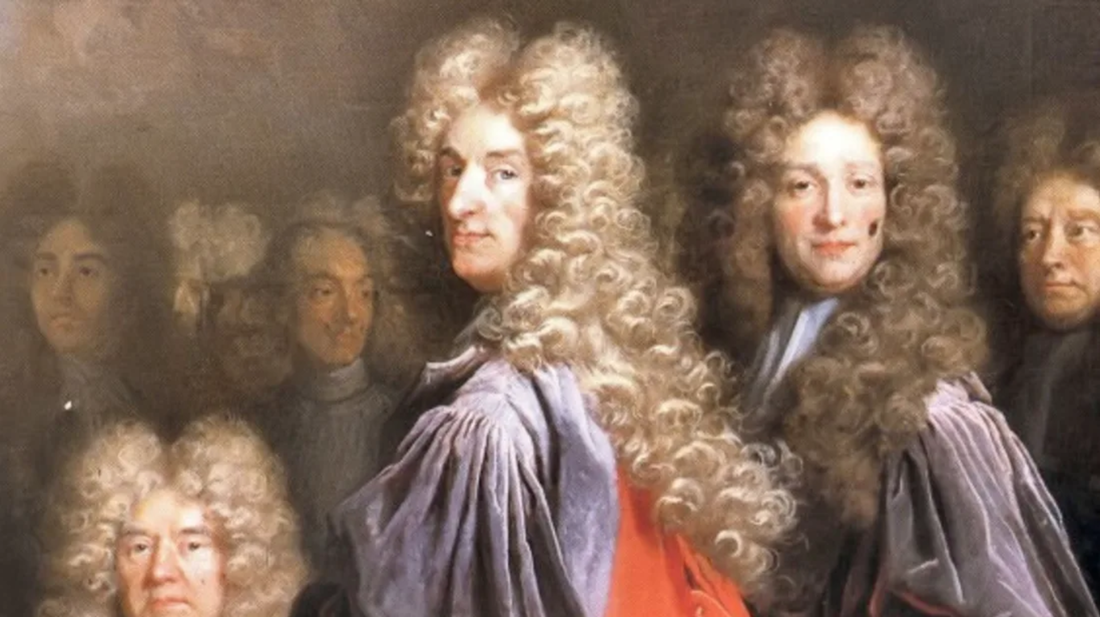


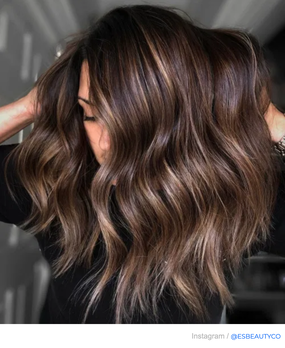


 RSS Feed
RSS Feed